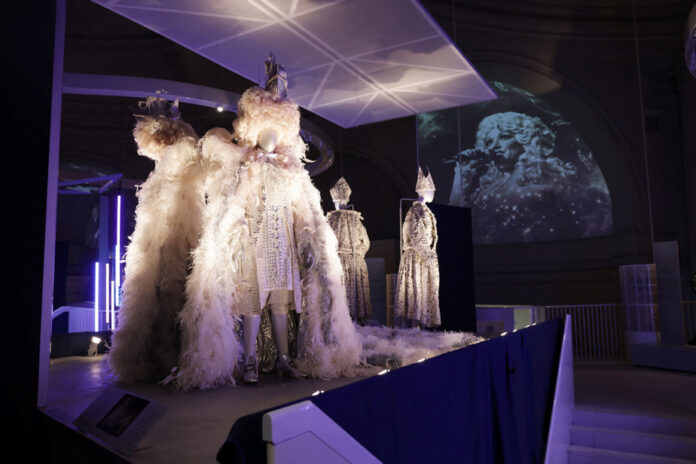(London) They are charismatic artists who have added their voices to feminism, anti-racism or LGBT rights: from 19th century opera singers to pop superstars, ‘divas’ are on the rise. poster for a major exhibition in London.
From June 24 to April 7, 2024, the Victoria and Albert Museum in London presents “DIVA”, an exhibition that traces the stories of dozens of women, mainly American and European, and a few men with a unique image and marked talent. .
The visitor can discover their life through more than 250 objects-photographs, film posters, magazines, fashion drawings, film extracts-accompanied by a soundtrack that evolves through interactive headphones.
But the heart of the exhibition is made up of some sixty outfits, ranging from the sequined dresses worn by Josephine Baker at the beginning of the 20th century to Stella McCartney’s creations for the American singer Billie Eilish, passing through models by great couturiers worn on red carpets.
“From early 19th century opera singers commissioning their own couture dresses to the […] Met Gala, the image of the diva expressing herself through fashion is incredibly important,” explained to the ‘AFP Kate Bailey, curator of the exhibition.
Plotted as a journey through two centuries of female emancipation, the exhibition begins with the first use of the Italian word “diva” (goddess) to refer to great female opera singers such as soprano Adelina Patti, who in the 19th century , was the most famous woman in the UK after Queen Victoria.
“My life has been a struggle to do things my way, with the feeling of being right,” said Sarah Bernhardt, who played 19th-century male roles such as Shakespeare’s Hamlet.
The diva then went from the stage to the cinema, silent then sound. A significant part of the exhibition is devoted to icons such as Greta Garbo, Marlene Dietrich, Elizabeth Taylor and Marilyn Monroe, the latter being represented by the famous pop portrait of Andy Warhol.
By recounting the struggle of these artists to find a place in a world dominated by men, the exhibition also describes the parallel evolution of the feminist movement and the creative industries.
It’s about showing “the diva and her power, the diva and her creativity…the one who has a voice and uses this platform to turn things around,” Ms. Bailey said.
The exhibition also focuses on Nina Simone and Ella Fitzgerald, artists and anti-racist activists, exhibited alongside more recent images from the Black Lives Matter movement.
If the most recent part of the exhibition focuses on stars like Tina Turner or Cher, with their spectacular outfits, the punk movement is also represented with the Englishwoman Siouxsie Sioux and her unconventional outfits.
The exhibition also focuses on Madonna, Björk and Lady Gaga, explaining that their ability to reinvent themselves like a chameleon has led some of them, such as the Scottish Annie Lennox, to play with borders of the kind.
This gender fluidity makes it possible to include other “divas” who, like Freddie Mercury, Elton John or Prince, have contributed to the fight for LGBT people with their feathered costumes and high heels, until resulting in figures like black queer rapper Lil Nas X.















